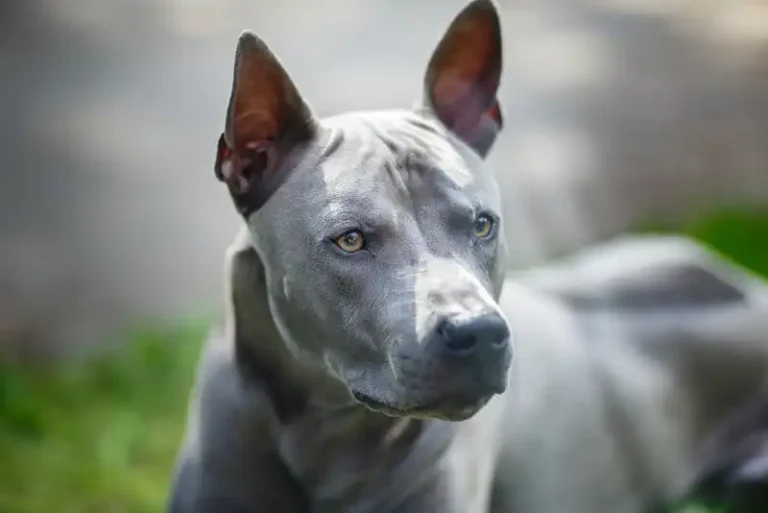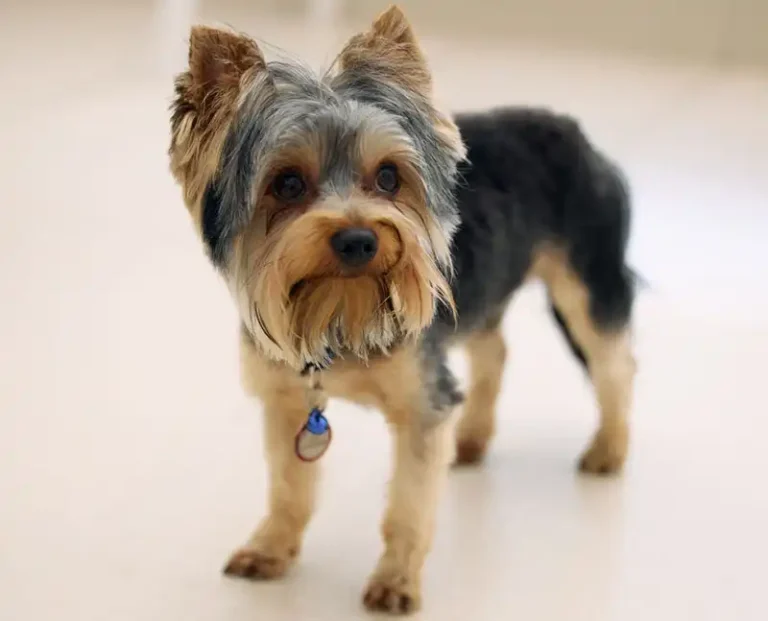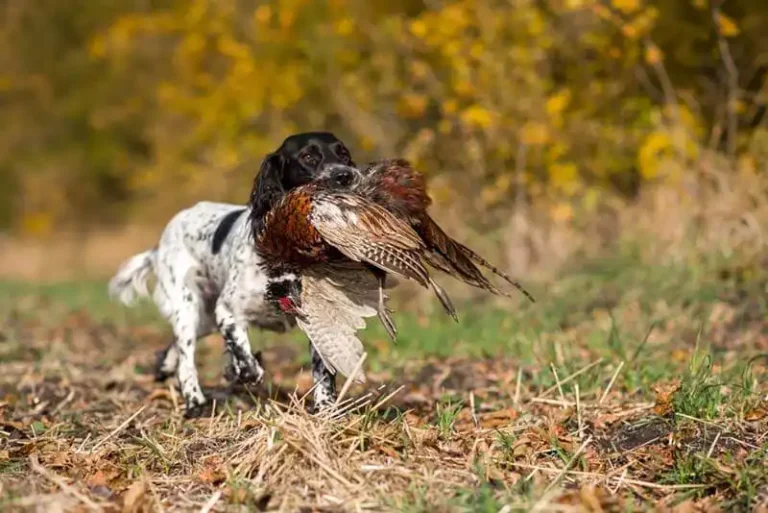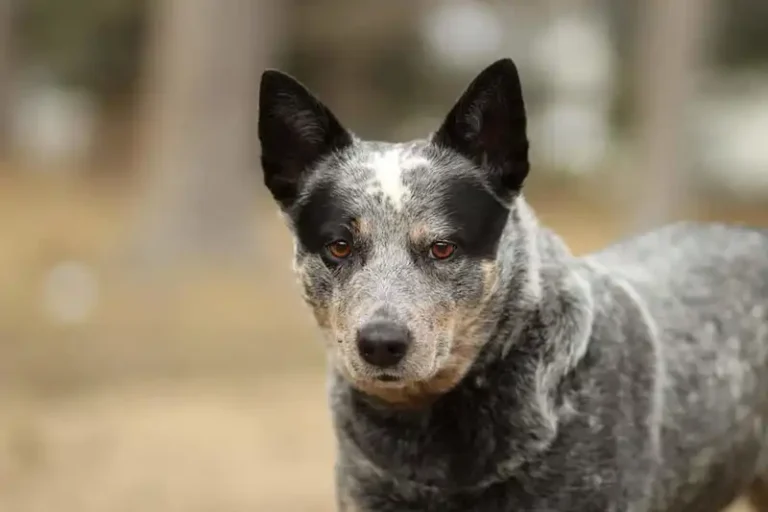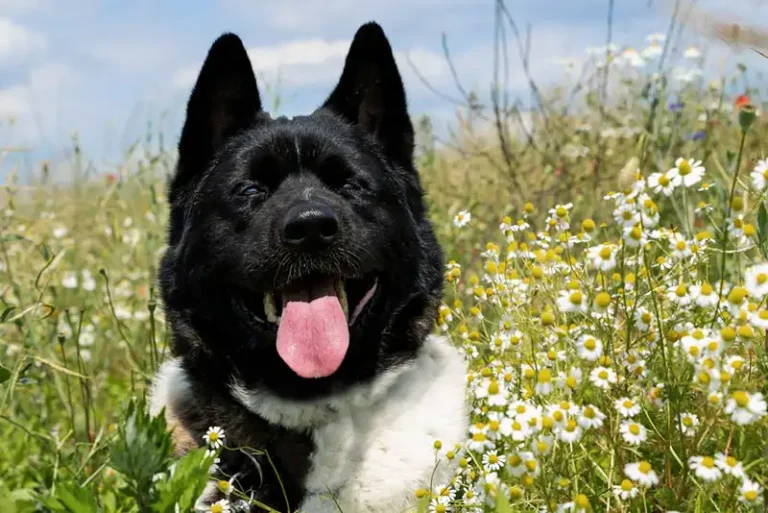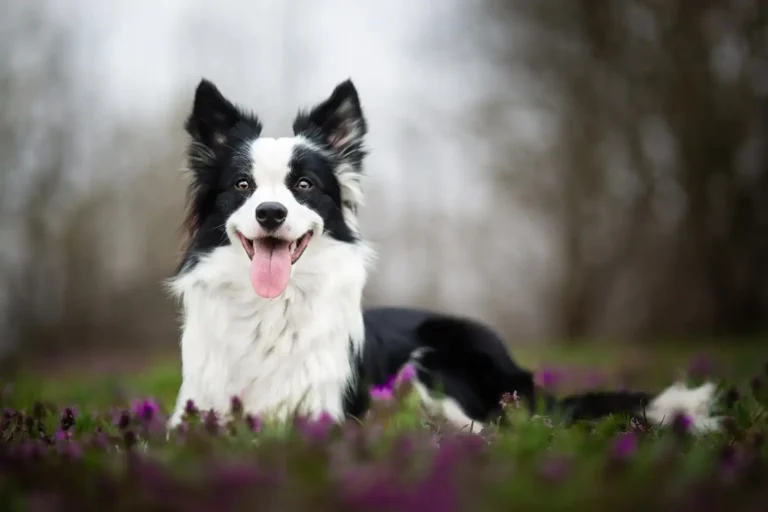Azawakh African Greyhound breed
The Azawakh or African Greyhound is a dog named after the Azawakh region of West Africa. The dog is most often associated with the African Tuareg people, traditional nomadic herders who inhabited vast areas of the Sahara Desert. The conditions of survival and the harsh environment have tempered the temperament and ensured the independent nature of the Azawakh breed.
In relation to new people, Azawakhs are observant and do not rush to make contact. With those whom the dog trusts, it will be affectionate and friendly. Azawakhs have an amazing dignity, which the owner must take into account. At the same time, the role of the leader in the domestic “pack” should be taken by the person.
Brief information about the Azawakh
The Azawakh is a fast, energetic breed known as a guardian, hunter, and watchdog. The breed is an elegant dog with a short coat, neatly folded ears, and well-defined muscle structure that stands out under thin skin.
The territoriality and independence of the Azawakh requires a confident owner who is willing to spend a lot of time maintaining the dog’s physical and psychological balance.
Country
Azawakhs are African sighthounds of the Afro-Asiatic type that originated in the Azawakh Valley in the territories of Niger, Mali and Burkina Faso. The official place of origin of the breed is considered to be Mali, a state in West Africa. Until 1970, the breed was not represented outside the African continent.
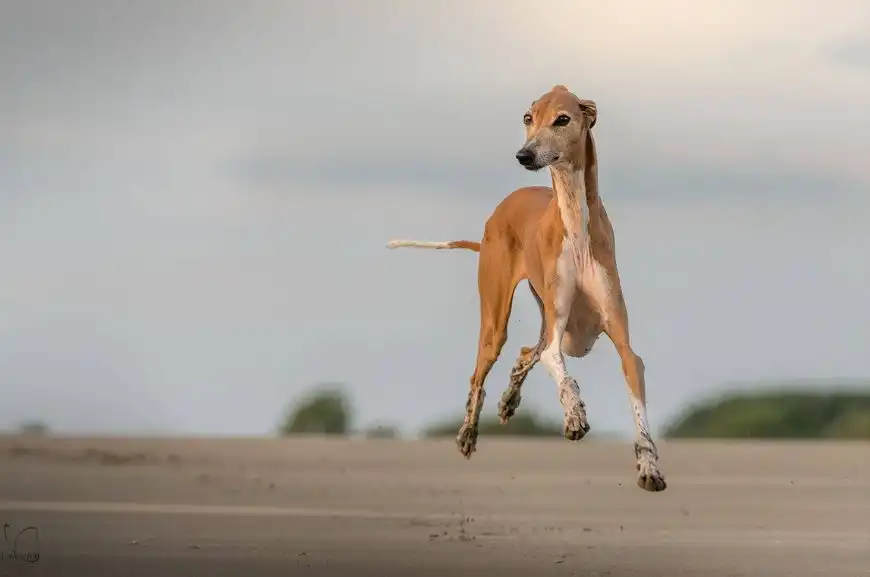
Group
Immediately after the FCI recognition, the Azawakh was registered as a variety of Sloughi (Tuareg Sloughi). However, this classification was cancelled a few years later. Breed supporters and breeders have proven that the Azawakh was not related or crossed with the Sloughi. According to the FCI classification, the Azawakh is included in the Sighthound group, the Short-haired Sighthound section .
Wool
The Azawakh’s coat is fine and lies close to the skin, with little fur on the belly. The skin is thin all over the body.
Colors
The coat colors allowed by the breed standard can range from clear sandy to dark brown and red with white markings on the legs, chest and tail. Some dogs may have a white tip on the tail. Puppies may have a “saddle” of diluted black that disappears after a few weeks.
The breed color strictly standardizes the position of the white spots on the dog’s coat. However, breeders urge not to ignore and take into account the large number of specimens with different distribution spectrums of white coat. The same applies to other colors and patterns of coat that are not recognized by the breed standard.
This contradicts the thesis, widespread in Europe, that colors not specified in the standard can only belong to “near-pedigree” individuals with mongrel blood.
Breed advocates are calling for the FCI to recognize that Azawakh dogs in Africa come in a variety of colors with various white markings, including a white collar and other white “markers” in the coat.
Dimensions
The Azawakh looks fit, dry and harmonious. Straight lines are typical for the animal’s silhouette. Dogs are representatives of medium-sized breeds, however, due to the high legs and greater elongation in height, the dog seems taller. The height of a male at the withers is from 64 to 74 cm, a female – from 58 to 70 cm.
Weight
Dog weight depending on gender: males – from 20 to 25 kg, females – from 15 to 20 kg.
Temperament
Azawakhs are a difficult breed, dogs require early training and socialization. Cynologists call the breed temperament of Azawakhs “complex and opaque”. Dogs demonstrate rare intelligence and, at the same time, primitive, instinctive behavior.
The Azawakh’s temperament can vary from moderately calm to quite tough and confident. Reserved with strangers, the dog will be gentle and affectionate with those it is willing to accept. A well-socialized, balanced Azawakh should not exhibit timidity, panic, or aggression.
Content
Azawakhs are active dogs that require regular exercise. They learn best when gentle methods are used. They respond well to gentle and firm handling and are usually positively motivated by food.
When training an Azawakh, the owner must take a leadership position, showing respect for the dog’s personality. Early training makes an adult dog more receptive to the wishes of its owner.
A separate house with a large territory is more suitable for a dog than keeping it in an apartment. Caring for the coat of the Azawakh is not difficult.
Fertility
The Azawakh dog breed has a litter of 1 to 10 puppies. The average birth rate is 4-6 puppies, sometimes breeders indicate an average litter of 5 to 9. Almost all Azawakhs give birth naturally. Caesarean section is rarely used.
Life expectancy
Azawakhs are generally considered a healthy breed. With proper care, they have a life expectancy of 12 to 15 years.
Usage
The historical role of the sporting sighthound is to be alert and always aware of what is happening around. Loving and intelligent family companions are ready to serve a person as guards or hunters. The main thing is that the dog’s needs are taken into account in the home.
Price
Azawakh is a rare breed. You can buy an Azawakh puppy in Russia for about 80-100 thousand rubles. A little less or more depends on the specific dog and breeder. The price of an Azawakh indicated on foreign resources starts from 2-3 thousand dollars.

Azawakh: History of the Breed
The history of the breed is believed to be several thousand years old. The ancient origins of the Azawakh are connected with the life of the nomadic African tribe of Tuaregs. The nomads of the Southern Sahara bred dogs for hunting, guarding and as a human companion. People of the past were proud of “exotic hounds of an exquisite type of extraordinary beauty.”
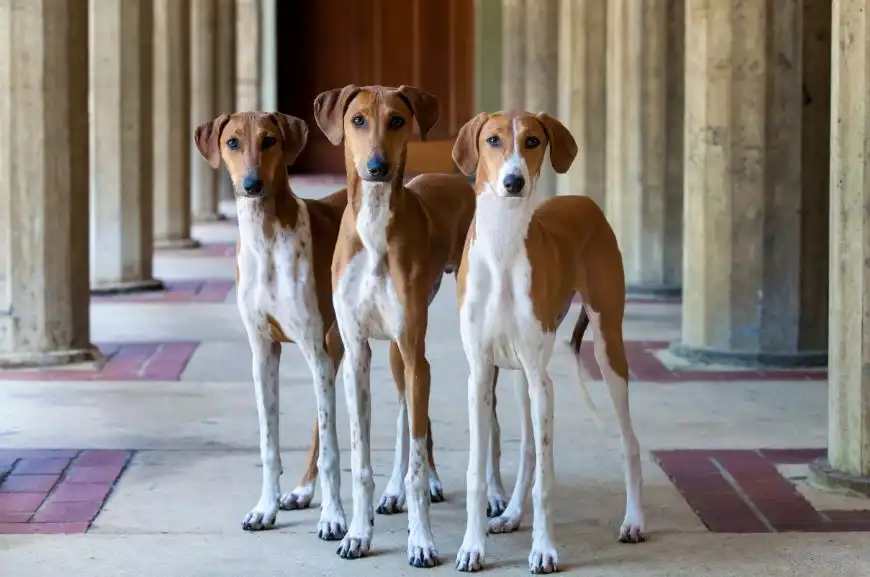
The Tuaregs are a warlike tribe. Fast and hardy dogs were well suited to the nomads. The Azawakh is still called the “dog of the free people”. The lack of food and difficult living conditions did not stop the proud animals and made them valuable assistants to man.
The Azawakh was first brought to Europe in 1970. A Yugoslav diplomat, Dr. Pekar, was working in Burkina Faso and received an Azawakh as a gift from locals. Azawakhs first participated in a dog show in 1970 as a variety of Sloughi.
Around the same time, the French military brought Azawakhs to Europe. Almost immediately, interest in the breed arose in France, and the first European breeders appeared. In 1980, Azawakhs arrived on the American continent.
According to experts, the African Azawakh sighthound today faces an “uncertain future” in its historical homeland. The reasons are the impoverishment of nomads and the natural problems of survival that dogs face.
Representatives of the breed are also rare in America and Europe. In Africa and other parts of the world, there are several associations and organizations whose goal is the conscientious preservation of the Azawakh.
Azawakh: breed description
The brief description of the appearance given by the Azawakh breed standard emphasizes the dog’s slender build and long legs. Some sources call the Azawakh (like the Italian Greyhound) “skinny.”
The Azawakh’s morphology is close to that of the fast Middle Eastern and North African hounds. The tall, medium-sized dog has a great deal of external resemblance to the Saluki and Sloughi, which are also part of the sighthound group. At the same time, the natural architectural beauty of the Azawakh contrasts with the Arabian appearance of the Saluki and the reserved dignity of the Sloughi.
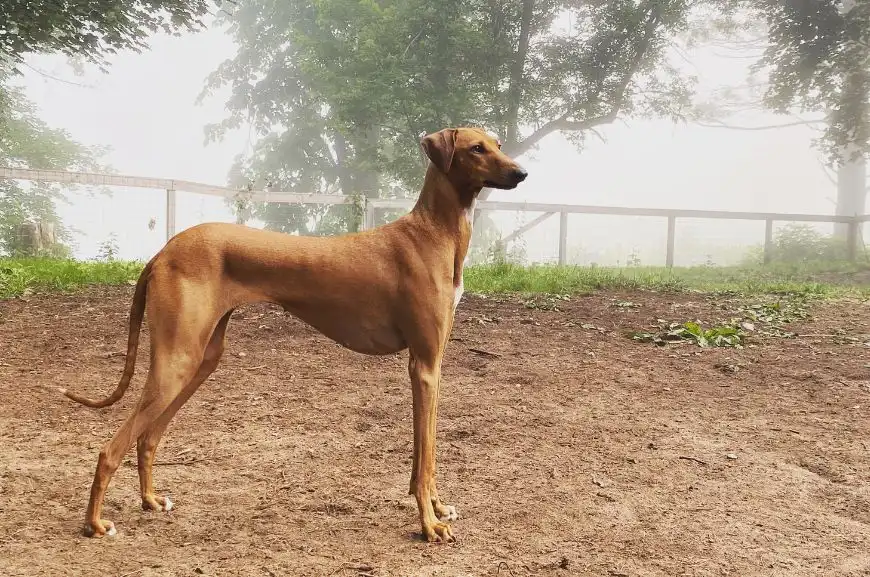
The external elegance and exoticism of the Azawakh is determined by a number of characteristic standard features:
- The head is elongated and thin, narrow, with an elongated straight muzzle. The skull is 40 percent of the head length in width.
- The neck is long, thin, muscular. The topline is straight, horizontal, with a slight rise to the hips.
The ribs are long and evenly curved. - The body is rectangular in shape. The ratio of the length of the body to the height is 9:10.
- The tail is conical, thin, long, low. When the animal is excited, the tail rises above the level of the back.
- The eyes are large, almond-shaped, the color of the eyes corresponds to the shade of the coat. The look is wild, untamable.
- The ears are triangular, high, with slightly rounded tips, raised at the base when the dog is tense and attentive.
- The nostrils are open, the color of the nose matches the color of the fur. The lips are thin and dense.
- The jaws are long and strong. The teeth are strong. The bite is “scissors”.
- The deep chest rises well high to the lumbar arch.
- The muscles and bones are well defined under the thin skin.
- The limbs are slender, long, muscular, the front ones in profile are slightly sloping, the back ones are perfectly vertical. Rounded paws with pigmented pads.
- The flexible, tall dog has a light gait, as if “floating above the ground.”
- The long-legged dog was used as a guard dog and for hunting hares and gazelles. The ability to chase moving game at high speed is a useful hunting skill.
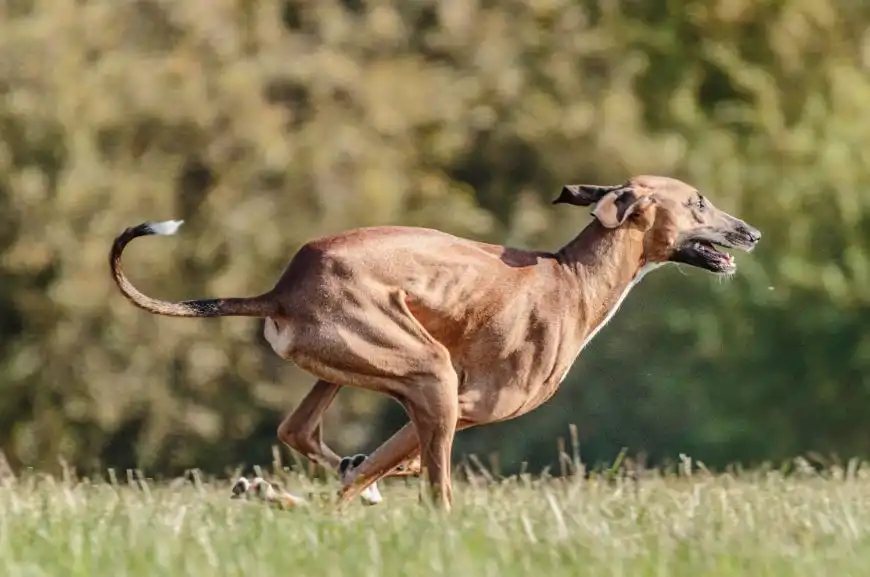
Azawakh character
The character of the Azawakh was formed historically. In addition to genetics, the geographical habitat of the breed played a major role. The unique aesthetic, mental, and physical qualities of the breed were formed by time, the harsh desert environment, and the hand of man.
Azawakhs are called “warrior dogs”. The owner of Azawakhs should be free of panic and have the ability to motivate others. Those who expect instant obedience will be disappointed.
The Azawakh is very territorial. If someone approaches the dog on its territory, it will loudly scare away the stranger by barking. In situations where there is no need to show protective qualities, Azawakhs behave differently. Some dogs are friendly and curious, others are a little distant, indifferent, suspicious or arrogant. Azawakhs are not considered very sociable animals. African peoples valued the dogs’ emotional restraint as a strength of character.
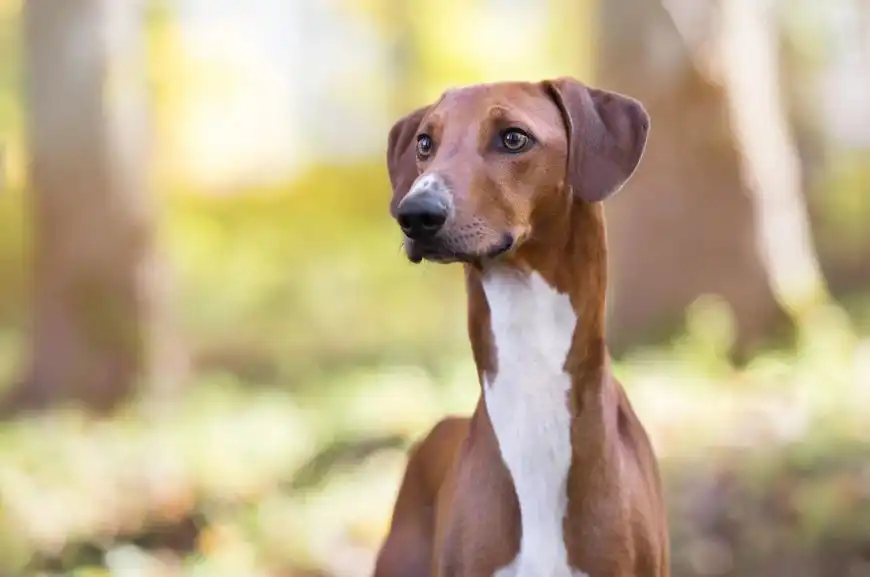
Azawakhs develop strong bonds with their owners and are affectionate with their family members. The breed’s devotion to humans is said to be “legendary.” The dog is characterized by a combination of complete loyalty to its owner and strong breed-specific independence. Every new situation is a potential for the dog’s natural desire to please and its breed-specific tendency to do things its own way.
For a harmonious life of the Azawakh in the family and society, the owner needs a strong will, confidence and consistency. Dogs do not tolerate a change of owner well.
Dog breeders who know the breed’s characteristics well note that “owning an Azawakh means building a very fragile and sensitive structure that can collapse at any moment.” In their home, the dogs will be independent, loving and playful, but guests are always under suspicion. With strangers, many Azawakhs behave reservedly, preferring not to be touched. They watch for a while before approaching.
Proper socialization at a young age toward strangers is critical, but breed experts say no amount of training can completely overcome the Azawakh’s “almost primal” distrust and suspicion of strangers.
Well-trained Azawakhs may appear to be the epitome of calm and gentleness. The flexible pets like to settle comfortably on a chair or in the owner’s lap. But don’t be fooled by this. Deep down, they are wild dogs, and they can remind you of this when necessary.
Azawakhs are highly social pack animals. They form complex social bonds and behavioral rituals with other dogs. They value communication and close physical contact.
Representatives of the breed – try to dominate the family “pack”. They will strive for the position of alpha dog. From the outside, it is clear that Azawakhs accept other dogs as members of their “pack”, although reluctantly. If there was already a leading dog among the pets before the Azawakh appeared there, a clash between them cannot be avoided.
The breed has a strong hunting instinct. Keen vision, speed, and endurance are demonstrated when the Azawakh is chasing prey in open spaces. The dog will be alert to any moving object, even a leaf fluttering in the wind can motivate the dog to chase.
No one can predict the individual personality traits of representatives of any breed, including predicting the behavior patterns of animals in relation to small children.
It is natural for a guard dog to protect “its” children from their playmates if the kids quarrel or disagree on a toy. In addition, a child playing too much can abuse the dog’s patience, which will cause the Azawakh to want to protect itself. Children running away from the dog can also activate the breed’s instinct to chase. You cannot leave a child with an Azawakh without the careful supervision of an adult.
The Azawakh behaves as a protector with a person. This is one of the main breed functions. As a guard dog, it will bark to warn the family (members of its “pack” of danger). As a result, the entire “pack” must gather in one place under the leadership of the leader, drive away and repel the predator. In this regard, there is a difference between the Sloughi and Azawakh breeds. Sloughi are independent, solitary hunters with a pronounced hunting instinct.
Azawakh: maintenance and care
The historical habitat of the dry and hot desert has influenced the fact that most Azawakhs do not like rain and cold. In wet and cool weather conditions, the desert dog requires additional clothing that does not restrict movement.
City life is not a very suitable environment for the Azawakh. A country house with a large fenced yard and walking area are conditions in which the Azawakh feels organic. It is desirable that the house be one-story, as it will be difficult for a long-legged dog to overcome stairs. It is necessary to provide a warm, dry place for the dog, which does not tolerate any cold, drafts and humidity.
A securely fenced yard or other open space where the dog can run and stretch is a good idea. Adult dogs spend one to two hours a day on walks. Experts believe that Azawakhs need at least half an hour a day of hard work, running, and vigorous play. Without proper energy outlets, the breed will become lethargic, overweight, or hyper-destructive.
To encourage training, the Azawakh needs to interact with humans and other dogs. Leaving the animal in the backyard and expecting it to occupy itself is not acceptable.
The dogs are active in fits and starts: after vigorous training, most representatives of the breed fall asleep on the couch. In this regard, owners note that the Azawakh turns into a calm pet as soon as its exercise needs are satisfied.
Easy grooming of the Azawakh’s short coat is done with a soft-bristled massage brush and a rubber glove. When grooming the coat, it is necessary to carefully examine the dog’s vulnerable skin for scratches, wounds, and cuts. Azawakhs usually do not react to skin damage for a long time due to their low sensitivity.
If the dog’s fur gets dirty during a walk, you need to wait for it to dry and then brush off the dirt. Azawakhs do not require frequent washing, the animals do not have a pronounced “dog” smell, but their skin is sensitive. When washing, it is recommended to use a soft, hypoallergenic, odorless shampoo.
Teeth cleaning is necessary, especially if the dog does not have access to bones to clean its teeth and it eats commercial food.
The Azawakh’s floppy ears can lead to infection, but this is not common in the breed.
A puppy should be accustomed to having its nails trimmed from an early age. Owners are advised to be firm and gentle during the process of accustoming it to the procedure. The breeder begins trimming the dog’s nails one to two weeks after birth, once a week. Usually, nails “clicking” on the floor are a signal that they need to be trimmed. They create discomfort when walking and are the cause of arthritis in the Azawakh.
Feeding
Azawakhs are naturally easy-going dogs. Nutrition is an important consideration for a breed that is still close to its roots. Many breeders believe that Azawakhs should be fed a simple natural diet or BARF , rather than commercial food. However, the choice of food depends on the owner’s personal preferences.
Maintaining the dog’s weight is an important topic when keeping it. Azawakhs should be slim. At the right weight, the dog will have some of its ribs and vertebrae visible, as well as its hip bones. As breeders say, “a fat hound cannot be happy.”
Overfeeding a growing dog will result in the Azawakh puppy developing joint and skeletal problems. Keeping the puppies slim while they grow will allow the joints and other body parts to grow properly. Overfeeding is especially dangerous for a pregnant Azawakh bitch. It is best not to increase the amount of food for a pregnant female until halfway through her term.
Proteins are the main part of the Azawakh’s diet. When feeding with self-prepared compositions, the pet will need vitamin and mineral supplements.
Training
The breed is said to be suitable for those who are willing to work hard to motivate their dog to do something. To motivate the Azawakh in training, it is recommended to pay attention to exercises that allow you to catch and chase.
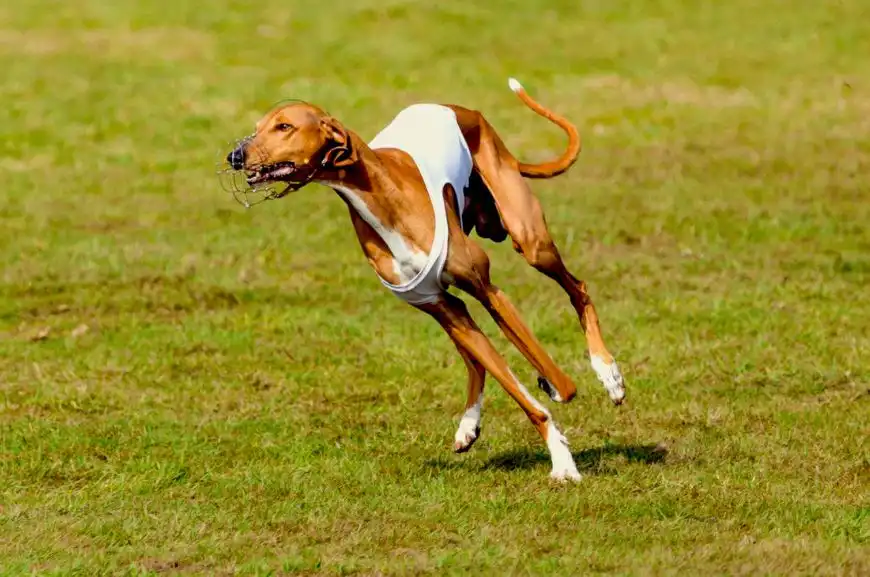
In their homeland, dogs are not only hunters, but also livestock guardians and defenders of settlements. Azawakhs have a highly developed territorial instinct. They will loudly defend their home and surrounding area, and if the dog is pushed or accidentally touched, it can respond with physical force.
A well-socialized Azawakh will adapt its behavior and learn to treat people without mistrust. The fact that Azawakhs exhibit territorial behavior and mistrust when meeting strangers has given rise to the myth that the dogs are aggressive, easily panicked, and difficult to train. The owner must teach the dog to react to visitors and to behave correctly in situations where additional protection is not required.
Early socialization, constant supervision and familiarization of the dog with different locations are necessary conditions for the education of the Azawakh. It is typical for well-mannered representatives of the breed that after accepting a stranger, the dog will recognize him as a friend after many years.
A trained and socialized puppy grows into a confident and obedient adult dog. As part of its upbringing, the young dog must learn that the owner is the “leader of the pack.” If the owner is inconsistent or lacks self-control, the dog’s behavior will be unstable and unmanageable. Mutual trust is built using firmness and determination on the part of the person, without harsh verbal or physical punishment.
Azawakhs quickly adapt to new situations, trusting the owner’s reaction to them. Group walks with other dog owners help to effectively and quickly socialize the breed. However, some dogs tend to want to remain in the home “vacuum” and communicate only with members of their family.
Azawakhs are very sensitive dogs with a strong and uncompromising character. Harsh verbal commands and physical punishment will not lead to the desired behavior. Positive motivation, on the contrary, leads to outstanding results in a short time.
Azawakhs have an extraordinary memory. They quickly get used to positive motivation and respond well to rewards. It is important to reward the dog whenever it obeys a command or behaves in the desired manner.
For a person who works many hours a day away from home, an Azawakh puppy will not be the right choice. Raising a dog from puppy age will require a lot of time from the owner. In this case, a person needs to choose a well-mannered, young, adult or elderly pet.
The Azawakh dog breed has a few health issues – seizures, hypothyroidism, and some autoimmune diseases. But overall, Azawakhs are a healthy breed. The more common illnesses they face are:
Hypothyroidism is a common endocrine disease in dogs associated with a decrease in the production of hormones by the thyroid gland, which play an important role in metabolism. With hypothyroidism, dogs’ body functions slow down, they become lethargic, prone to colds, have dry fur, and gain excess weight.
Spondylosis is a degenerative disease of the spine characterized by the formation of bone growths. Spondylosis develops as part of natural aging or as a result of injury. Irreversible damage to the vertebrae can lead to loss of mobility.

